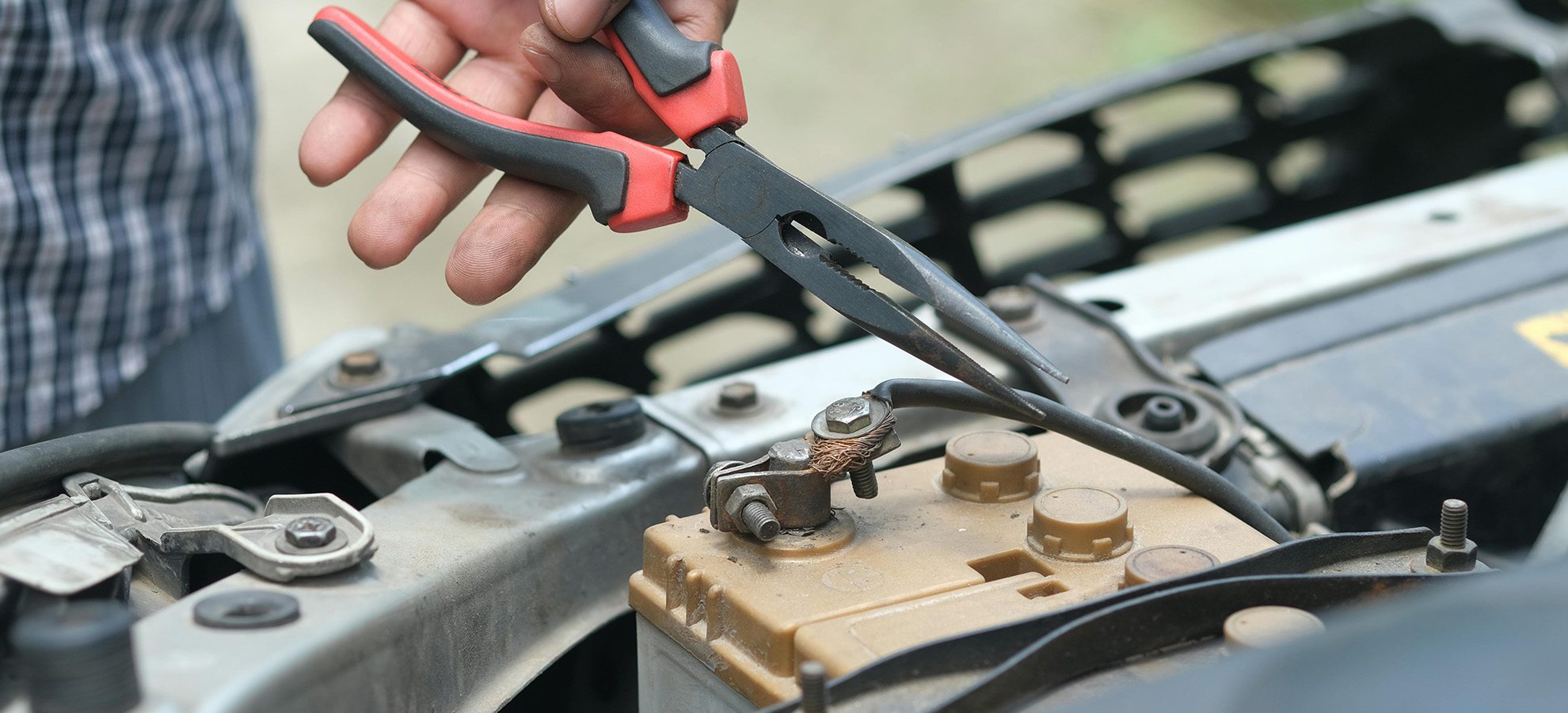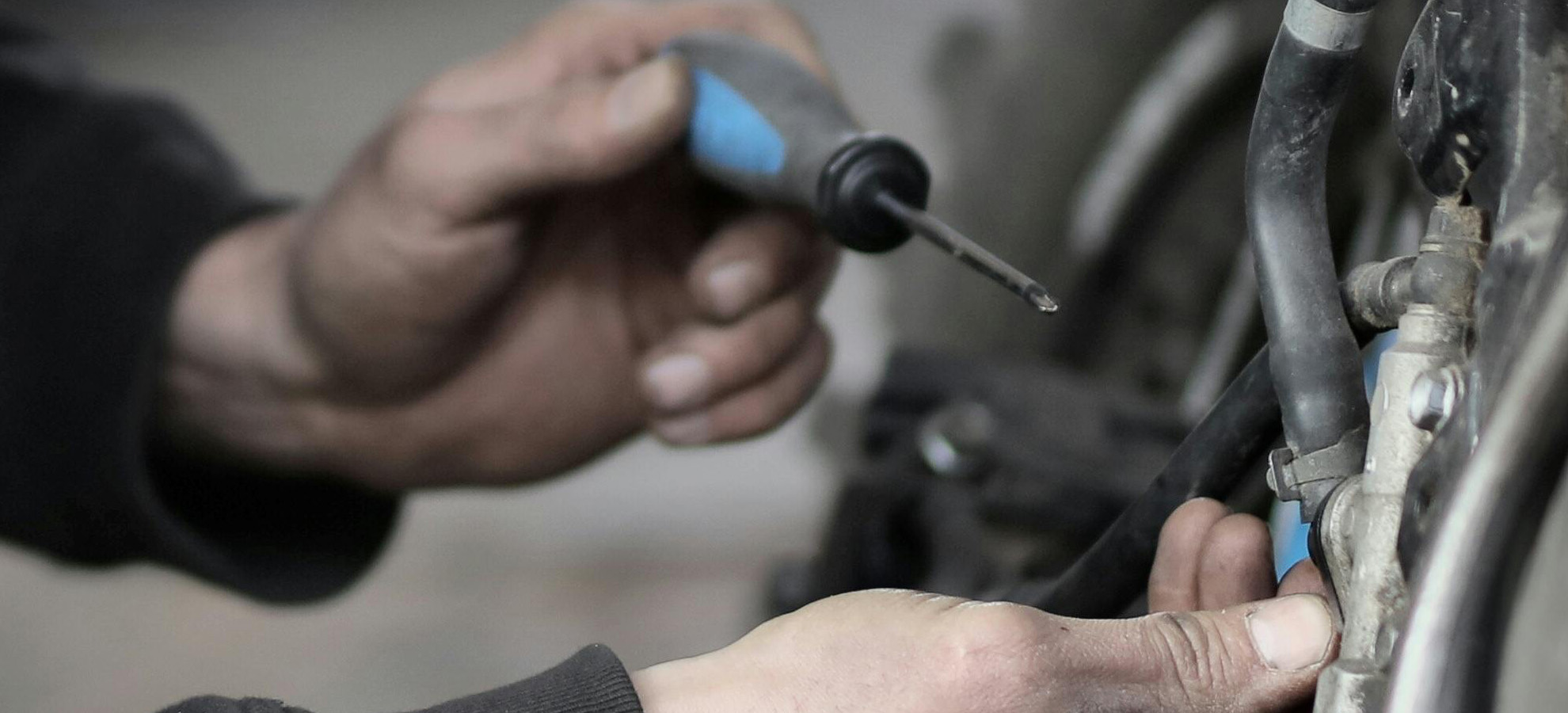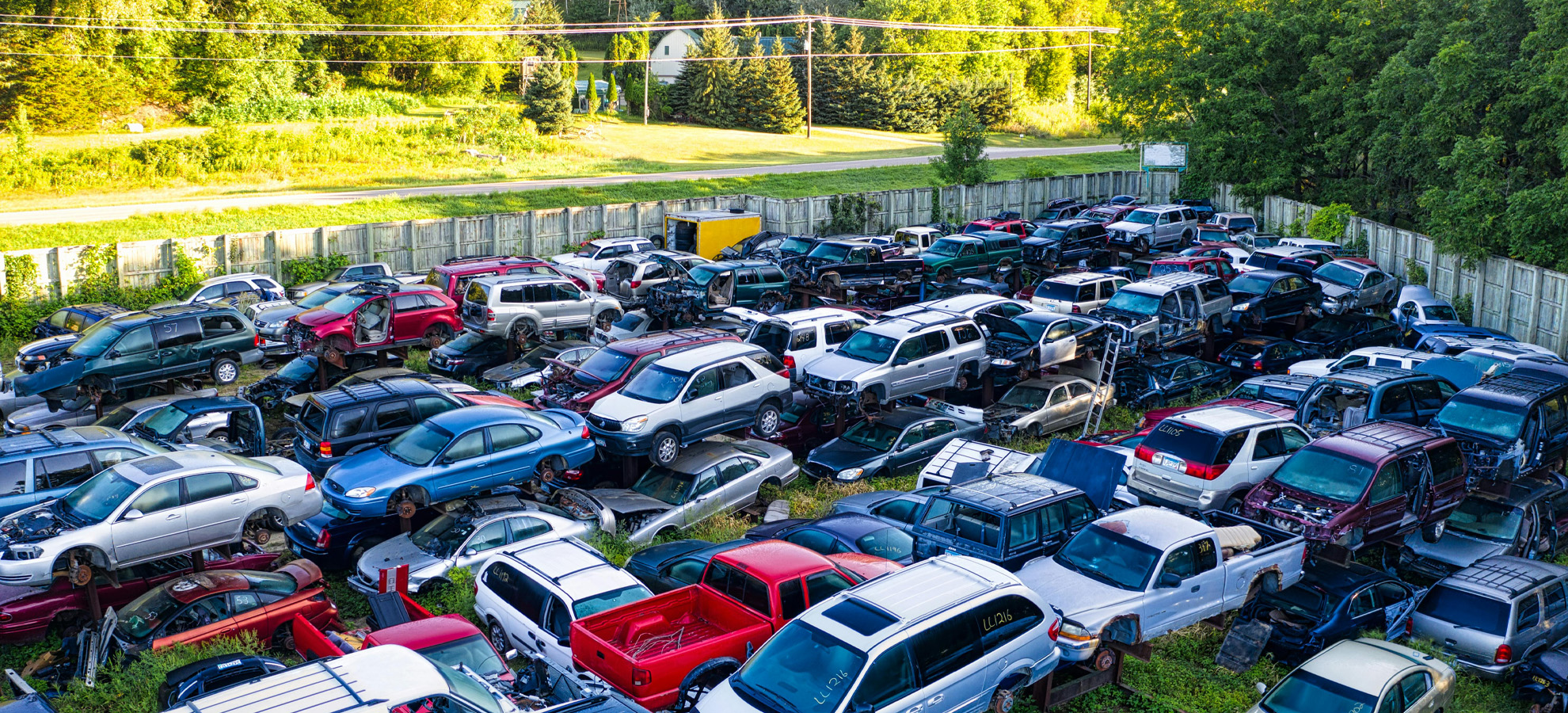 5 min read
5 min read
Self-Service vs. Full-Service Salvage Yards: Your Comprehensive Guide

Whether you’re hunting for affordable parts or interested in doing the work yourself, the type of salvage yard you visit can make a BIG difference between your overall experience, the parts you get, and what you pay. For automotive enthusiasts, DIY mechanics, and budget-conscious car owners, choosing the right salvage yard can mean the difference between a smooth, cost-effective parts-hunting experience and a frustrating waste of time (trust us, we’ve been there).
Professional mechanics often swear by their favorite yards, while your humble DIY’er might find themselves torn between the tough question – go with the ease you experience at full-service facilities OR potentially save a boat-load with the self-service option.
In this comprehensive guide, we’ll dive into what makes each option unique, explore the pros and cons of both types of salvage yards, and help you make an informed decision about where to go for your next parts haul.
By understanding the key differences between these two options, you’ll be better equipped to choose the salvage yard experience that best matches your skill level, time constraints, and automotive needs.
What Is a Salvage Yard?
Let’s start from the top. A salvage yard, also known as a junkyard, auto recycler, or wrecking yard, is a facility where end-of-life vehicles are dismantled and their parts are resold. These vehicles may have been damaged in accidents, retired due to age, or deemed unfit for further use. Instead of allowing these vehicles to go to waste, salvage yards recover usable parts, offering a great eco-friendly solution for vehicle repairs while helping people save money on their car maintenance.
The primary benefit of salvage yards is access to affordable parts that are often hard to find elsewhere. Whether you’re searching for an OEM (original equipment manufacturer) part or an aftermarket component, salvage yards offer a vast selection of parts from vehicles of various makes, models, and years.
Salvage yards are also great at helping our planet – contributing to environmental sustainability by ensuring that old vehicle parts find a new home (not the trash dump), reducing the need for new manufacturing and all the associated negative environmental impacts that come with that process.
There are two primary types of salvage yards: full-service salvage yards and self-service salvage yards (don’t worry, we’re going to talk about what each is at length in the following paragraphs). While both options allow you to buy used parts, the experience and cost differ significantly between the two. Let’s dive and give you a hand in determining which type suits your needs.
What Is a Full-Service Salvage Yard?
A full-service salvage yard is a yard where trained professionals inspect, remove, and sometimes refurbish the parts before offering them for sale. They are designed for a healthy balance between convenience and price.
At a full-service salvage yard, you don’t need to bring any tools, nor will you need to extract the parts yourself. Instead, you simply work with the mechanics to find the part you’re looking for, and they’ll handle the rest.
Easy peasy.
Full-service yards employ trained professionals (dismantlers) who inspect and remove the parts before offering them for sale. For individuals who are short on time or who may not have the expertise or tools to remove parts, full-service salvage yards provide a hassle-free experience.
Services Offered
Full-service salvage yards offer a wide range of services to their customers, including but not limited to:
- Part Removal: The biggest benefit of full-service salvage yards is that the staff handles all part removals. This means you don’t need to worry about searching through rows (and rows, and rows) of vehicles, or dealing with potentially dangerous parts like rusted bolts and stuck components. The professionals at the yard are trained to efficiently remove the parts you need.
- Part Testing and Cleaning: In many cases, full-service yards will test and clean the parts before making them available for purchase. For example, alternators, starters, and other electrical components are often tested to ensure they function correctly. This adds an extra layer of assurance that you’re buying a reliable part.
- Warranties and Guarantees: Some full-service salvage yards offer warranties on their parts, giving you peace of mind. This is particularly helpful when purchasing high-ticket items like engines or transmissions, where a warranty can save you from costly repairs down the road.
Pricing and Convenience
While full-service salvage yards offer great convenience, it comes at a cost. The price of parts from a full-service yard is typically higher than at a self-service yard because you’re not only paying for the part but also for the labor involved in removing, cleaning, testing, and sometimes even refurbishing the part. For those who are pressed for time or lack the skills to extract parts themselves, the additional cost can be well worth it.
Another advantage of full-service salvage yards is speed. Since the yard’s staff handles all part removal, you won’t have to spend time hunting for the right car or struggling to remove parts. This is especially valuable if you’re working on a tight timeline and need parts quickly. In addition, many full-service yards have detailed inventories, so you can often call ahead to check availability or search their stock online at sites like shopearl.com.
What Is a Self-Service Salvage Yard?
In contrast to full-service yards, self-service salvage yards, also known as “pick-and-pull” yards, operate on a do-it-yourself basis. When you visit a self-service yard, you’ll need to bring your own tools, search the lot for the vehicle containing the part you need, and remove it yourself. While this process may require more time and effort, it offers several advantages, particularly for those who enjoy working on their vehicles and are comfortable with basic mechanical tasks.
DIY Approach
At a self-service salvage yard, you’re responsible for the entire process, from locating the vehicle to extracting the part. This hands-on approach appeals to many car enthusiasts and hobbyists who enjoy the challenge of dismantling vehicles. It also provides an opportunity to learn more about how cars work and improve your mechanical skills.
Self-service yards are usually set up in a way that allows you to browse rows of vehicles arranged by make and model. You’ll need to bring your own tools—wrenches, screwdrivers, and socket sets are essential—to remove parts. In some cases, self-service yards even allow customers to bring larger equipment like carts or wheelbarrows to help transport parts from the yard to their vehicles.
Pricing and Selection
The main draw of self-service salvage yards is the significant savings they offer. Since you’re doing all the labor yourself, self-service yards can afford to sell parts at a much lower price than their full-service counterparts. Additionally, self-service yards often have a wide selection of parts from different makes and models, but the availability of specific parts is more variable.
However, this lower cost comes with a trade-off. Unlike full-service yards, self-service salvage yards don’t test or clean their parts before selling them. What you see is what you get, and it’s up to you to inspect the parts for damage or wear. Additionally, self-service yards generally don’t offer warranties, meaning there’s no guarantee the part will work after you’ve removed it.
Which Option Is Right for You?
How Do You Decide Between Full-Service and Self-Service Salvage Yards?
Choosing between a full-service salvage yard and a self-service salvage yard depends on several factors, including your budget, skill level, and how much time you’re willing to invest. If you prioritize convenience, reliability, and are willing to pay a premium for someone else to handle the labor, a full-service yard may be your best bet. However, if you’re looking to save money and enjoy the process of working on your car, a self-service yard could be the better option.
Pros and Cons of Full-Service Salvage Yards
Pros:
- Convenience—no need to remove parts yourself.
- Professional expertise—parts are cleaned, tested, and often warrantied.
- Fast turnaround—because parts are pre-removed and inventoried, you’ll get what you need quickly.
Cons:
- Higher prices—you’re paying for the labor and expertise.
- Less hands-on experience—great for convenience, but not ideal for enthusiasts who like to tinker.
Pros and Cons of Self-Service Salvage Yards
Pros:
- Lower prices—you only pay for the part, no labor costs.
- Hands-on experience—perfect for DIYers who enjoy working on cars.
- Greater control—you can personally inspect the vehicle and the parts you’re removing.
Cons:
- Time-consuming—you have to find the vehicle, extract the part, and transport it yourself.
- No guarantees—parts aren’t tested or warrantied.
- Physical effort required—you’ll need to bring your own tools and possibly deal with rusty or stubborn parts.
Key Differences Between Full-Service and Self-Service Salvage Yards
Now that we’ve covered the basics of both types of salvage yards, let’s dive into the key differences between full-service salvage yards and self-service salvage yards. While both offer the opportunity to buy used auto parts at a discount, the experience they provide is quite different.
- Level of Service
Full-service yards take care of everything for you, while self-service yards leave the work in your hands. This is the biggest difference between the two. - Cost
Full-service yards charge more because of the labor involved, whereas self-service yards pass the savings on to you since you do the work yourself. - Inventory
Full-service yards typically have a more organized inventory system, while self-service yards often require customers to search through vehicles on their own. - Part Condition
At full-service yards, parts are usually tested and sometimes cleaned before sale. In contrast, parts at self-service yards are sold as-is, and it’s up to the customer to inspect them for quality.
Tips for Getting the Most Out of a Salvage Yard
To maximize your salvage yard experience, here are a few tips:
- Know What You Need:
Before heading to the yard, do your research. Know exactly which parts you’re looking for, and if you’re visiting a self-service yard, bring any necessary tools to remove them. - Check Online Inventories:
Many salvage yards have online inventories that allow you to see what vehicles are currently on the lot. This can save you a lot of time and effort. - Inspect Parts Carefully:
Always inspect parts for wear, rust, or damage. This is especially important at self-service yards where parts aren’t tested or guaranteed. - Bring the Right Tools:
For self-service yards, make sure you have the right tools to remove the parts you need. Basic tools like wrenches, screwdrivers, and pliers are a must.
FAQs
What is a self-service salvage yard?
A self-service salvage yard is a type of junkyard where customers bring their own tools, locate the vehicle they need parts from, and remove the parts themselves.
What is a full-service salvage yard?
In a full-service salvage yard, the staff handles all part removals, inspections, and sometimes even testing and cleaning before the parts are sold.
Which type of salvage yard is cheaper?
Self-service salvage yards are generally much cheaper than full-service yards because you’re doing the labor yourself.
Can I get a warranty on parts from a salvage yard?
Most full-service salvage yards offer warranties or guarantees on parts, providing an added layer of security.
What should I bring to a self-service salvage yard?
Bring your tools, gloves, and any other equipment you’ll need to remove the parts. Some yards also allow you to bring carts to transport parts.
What kind of parts are sold at salvage yards?
Salvage yards specialize in used OEM auto parts. However, some full-service salvage yards also offer aftermarket, and refurbished parts as well.
The Finish Line
Choosing between a full-service and a self-service salvage yard ultimately depends on your needs, preferences, and skill level. If you’re looking for convenience, quick turnaround, and a bit more assurance with the parts you’re buying a full-service yard is the way to go. It’s perfect for those who don’t mind paying a little extra to save time and effort. On the other hand, if you enjoy getting your hands dirty, love the thrill of the hunt, and want to save money, then a self-service yard offers a more budget-friendly and hands-on experience.
Both types of salvage yards provide great opportunities to find quality used OEM auto parts at a fraction of the cost of buying new. Whether you’re a seasoned DIY enthusiast or someone just looking for a reliable part without the hefty price tag, knowing the pros and cons of each will help you make the best decision.
No matter which option you choose, salvage yards are an excellent resource for affordable car parts, and they offer a sustainable way to keep vehicles running while reducing waste. So, next time you need a replacement part, consider the benefits of full-service or self-service yards and take the plunge into the world of automotive recycling.










